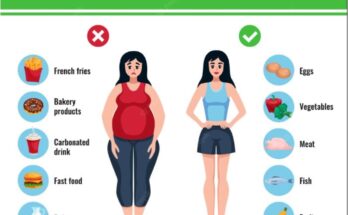These findings can help identify appropriate interventions for managing stress and enhancing resilience.
 Education: Effects of childhood trauma on biomarkers of twenty-five diseases and twenty health conditions in adults: Differences by sex and type of stress. Image credit: New Africa / Shutterstock.com
Education: Effects of childhood trauma on biomarkers of twenty-five diseases and twenty health conditions in adults: Differences by sex and type of stress. Image credit: New Africa / Shutterstock.com
A recent study in Brain, Behavior, and Immunity examines the differential effects of childhood adversity on disease biomarkers and health outcomes in adulthood.
Adverse childhood experiences and adult health
Current knowledge of the psychosocial drivers of chronic conditions is limited, which has hindered the development of effective methods of diagnosis and individualized treatment. Psychological stress that occurs during childhood, collectively referred to as adverse childhood experiences (ACEs), may include, but is not limited to, emotional neglect, physical abuse, as well as witnessing domestic violence or violence.
Different stressors can cause unique and different effects on health and physiology. For example, compared to childhood neglect, abuse has been shown to be a predictor of inflammation later in life. In addition, stress is often related and often occurs separately, which makes it difficult to evaluate their independent effects.
Based on the stress model, ACEs have effects on overall health and development. This model assumes that different ACEs have the same consequences for human health and development, as they are ‘created equal.’
In addition, the dimensions of trauma theory suggest differences across specific stressors while considering a variety of dimensions, such as environmental abuse, threat, deprivation, and not known in advance.
About education
The present study aims to identify the grouping of individuals based on their exposure to different ACEs, to assess whether these groups reflect the dimensions of the crisis theory or the stress model, and examining sex-based variables and stress. Two major health conditions and twenty-five different stressors and disease vectors were considered.
Latent category analyzes (LCA) were performed to identify groups of adults who experienced more ACEs. A total of 2,111 people from the Midlife United States (MIDUS) study were found, with an average age of 53, 54.8% of them women.
Relationships between 25 biomarkers of inflammation, metabolism, and stress, as well as 20 major health conditions, latent stress exposure groups, and individual stressors, also were examined.
Study findings
The correct LCA models yielded two groups of men of low and high stress, as well as low, moderate, and high stress groups among women. These groups were consistent across MIDUS frequencies.
Compared to men with low stress levels, those in the high stress group had higher serum biomarkers of inflammation, including interleukin 6 (IL-6), C-reactive protein (CRP), and intercellular adhesion molecule (I-CAM), and metabolic health, as indicated by body mass index (BMI), insulin, insulin resistance, triglycerides, and low-density lipoprotein (LDL), as well as low levels of high-density lipoprotein (HDL). Women with high levels of stress had higher BMI, insulin, insulin resistance, and triglycerides levels, as well as lower levels of urinary cortisol, compared to women with low levels of stress.
Men with high levels of stress were at greater risk of several health conditions compared to men with low levels of stress, including circulatory problems, high blood pressure, thyroid disease, cholesterol problems, cancer, depression and arthritis.
Compared to women with low levels of depression, women with high levels of depression were more likely to have 18 of the 20 conditions examined, excluding glaucoma and blood clots. Women with moderate stress were also more likely to have cholesterol problems, thyroid disease and depression.
Higher levels of inflammation were more reflective of the effects of well-being during childhood, as higher levels of inflammation were observed among males and females who reported having well-being. Financial worries were significantly associated with depressive symptoms in men, as well as inflammation and glucose levels among women.
Higher levels of physical abuse were associated with greater anthropometric measurements and higher markers of glucose metabolism for women. Emotional abuse and neglect were significantly associated with blood problems, thyroid problems, and glaucoma in men, and to a lesser extent, behavioral or psychological problems.
For women and most conditions, the level of well-being during childhood was higher than the health problems compared to men. Among healthy men, behavioral issues and risks of blood problems were slightly higher compared to women.
Decisions
Different stressors during childhood have different effects on biomarkers and health, with notable gender differences. Even within the same hierarchical construct, different types of stress had different effects on health.
Taken together, these findings show how ACEs are linked to health conditions and disease biology that can lead to disability and death in older adults. These data provide important insights into how stress-health associations differ across genders and across types of childhood stress.
The current study highlights the need to screen for early stress, which may help reduce disease risk and burden in adulthood.
Journal reference:
- Alley, J., Gassen, J., & Slavich, GM (2024) Effects of childhood trauma on biomarkers of twenty-five diseases and twenty health conditions in adults. : Differences by sex and type of depression. Brain, Behavior and Immunity 123;164-176. doi:10.1016/j.bbi.2024.07.019
#Childhood #problems #higher #health #risks #vary #sex #stress


